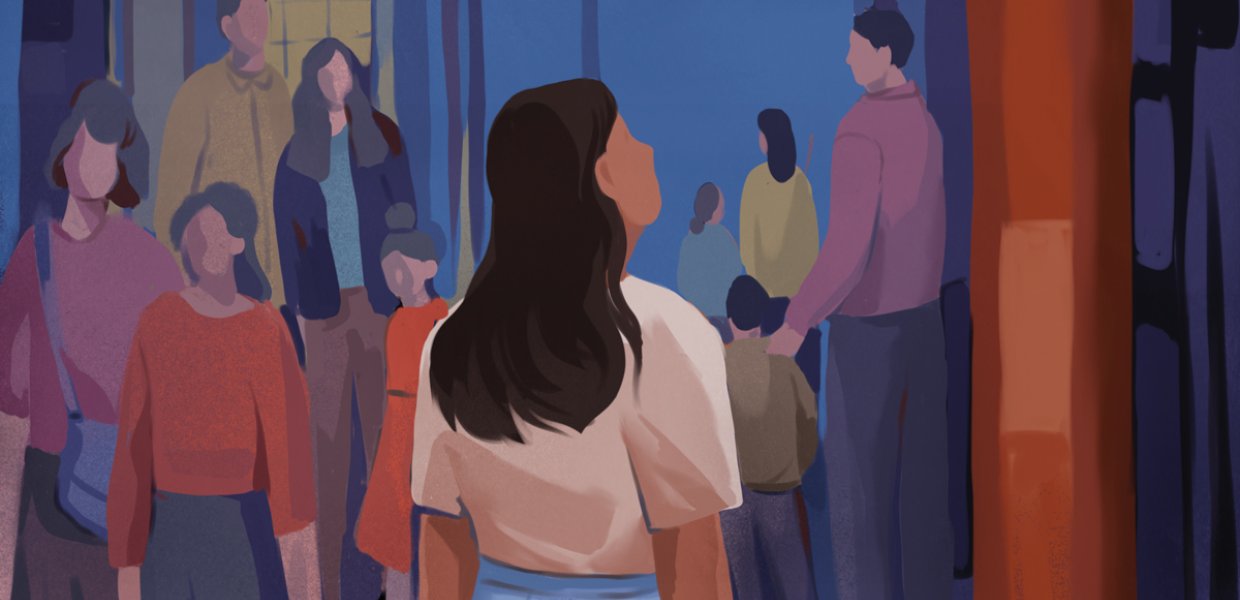My quiet quest to find home away from home.
There’s something familiar and embarrassing about going to Chinatown. Maybe it’s the embarrassment that’s familiar, or the familiarity that’s embarrassing.
Either way, walking up to the peeling and artificially red wooden gates of new Chinatown in Los Angeles reminds me of the times I asked my grandpa to pick me up at the back of the parking lot so the other third-graders wouldn’t see, or notice I was different. Of the times I wished I was invisible while holding my grandmother’s hand to steady her as we walked. Of the times I stood in front of the mirror and asked to look like someone else.
Here, I like to see without being seen. People cooking in the windows, kids clutching neon toys from the dollar store, and Full House Seafood Restaurant, whose name reminds you that my people will make space for anybody. That we are grandmas who cut apples and squeeze cheeks and mothers who know bowls of mapo tofu as their first love language.
It’s the smells, too. The dance between sweet and umami from the chickens hanging in the window. The aroma of fry oil that creates my mom’s favorite: the red bean paste sesame ball.
Few visitors realize how lucky they are to be here. That the survival of these buildings — these people — is revolutionary in itself. That signs showing the history of Chinese immigrants in L.A. are a result of years of exclusion, getting pushed out, to the side, out of sight. They grasp at strings to say, “We’re still here.” “Don’t forget us.” “Can you hear me?”
Chinatown in 2021 is a different world from Chinatown in 1871. Chinatown now is growing, colorful, albeit a little desolate. Chinatown then was crushed.
How do you find a history no one has told you? You look to empty streets, to notices scattered between buildings that say photo shoots for social media must be approved — a stinging reminder that, to many, we are simply a backdrop to be used and forgotten. Yes, phone eats first. To be Instagrammed, then ignored. You look to grandpa’s wrinkled hands and to the faded red lanterns that dangle helplessly from tangled telephone wires as if begging to be a metaphor for what it means to want to fly when you’re tied to a trillion things being said but not heard.
In 1871, a gunfight in L.A.’s original Chinatown led to a massacre with 18 documented deaths, one of the worst lynchings in this country’s history. In the 1930s, what was left of Chinatown was knocked down to make room for Union Station. In 2020, the pandemic hit, windows were smashed and doors closed. Some things are harder than others to repair.
“Do you know that you’re Chinese?”
I look up to see a mom with eyebrows raised towards her son who is too busy wondering why his brother gets to be a snake zodiac when he is a ram.
“A ram is strong,” the mother tells him. “It fits you, trust me.”
The woman at the counter grins knowingly, and I smile too, thinking how lucky it would be to only worry about snake or ram.
I worry grandma will get pushed over at the grocery store. I worry a nail salon is not safe. I worry people will realize I’m a transplant here, and that will remind me I’m a transplant everywhere.
My first trip to L.A.’s Chinatown ends with me sitting on a bench below a sign waiting for my Lyft by a bakery named Phoenix — hailed for the best strawberry cake around.
Phoenix. A chance to end this piece with some metaphor about rising from the ashes. About resilience. A temptation to leave you with a little bit of hope. To make it easy. To write a story that you can smile at, that then drifts away. The story of a place called Chinatown. A story of oblivion.
Under the midday L.A. sun with skin stuck to the rusted metal of a broken bench barely supporting the weight of me and one egg tart in a white paper bag, I remember that sometimes there’s just fire.
Julia Lin is a progressive degree student pursuing a bachelor’s degree in journalism and a master’s in digital social media. This article is adapted from a longer essay she wrote for the International Communication Studies (ICS) program.
